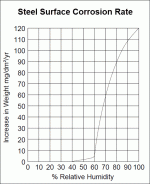arquebus357
New member
Good grief. Dunk it in some EvapoRust for a few hours and rust will be gone. EvapoRust is NOT an acid so it won't etch the stainless finish. I would not use any form of abrasive on the finish. If your gun has that nice satin factory finish, It will be ruined. Steel wool is "harder" than stainless steel so it will leave scratches. Maybe bronze wool would be ok though.

